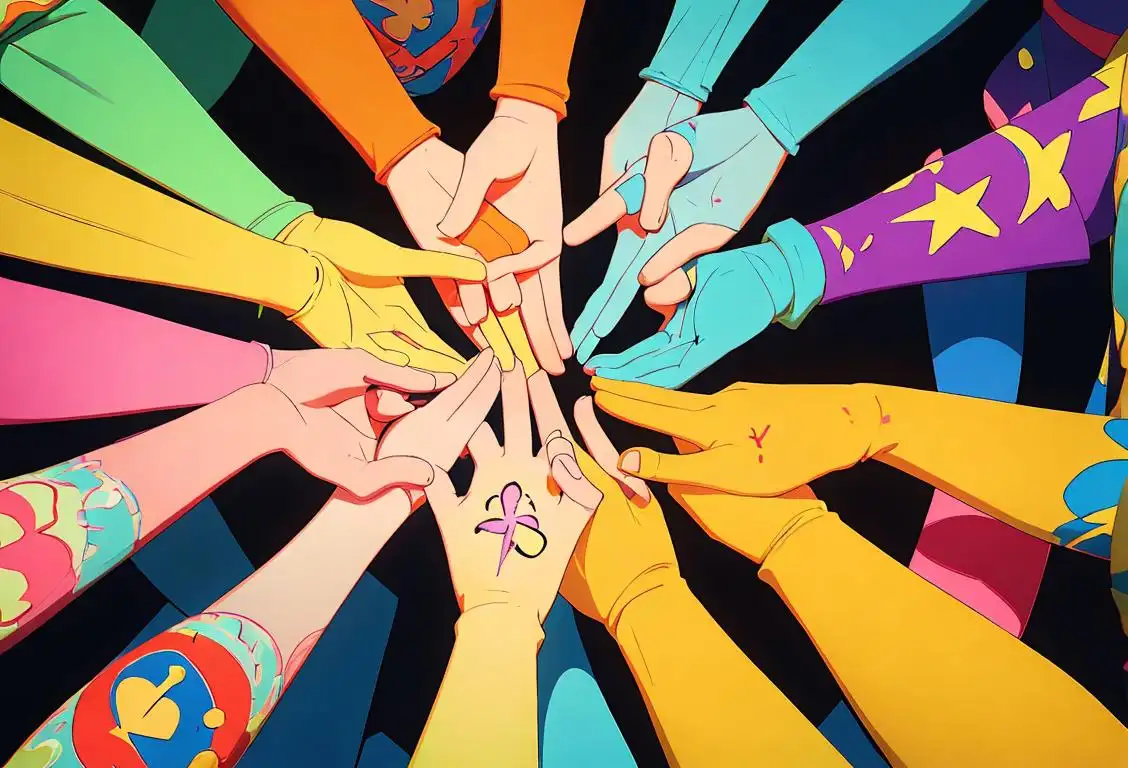National No Cell Phone Day

Welcome to the wonderful world of National No Cell Phone Day! Let's take a break from our smartphones and explore the joys of being present in the moment.
When is No Cell Phone Day?
It's national no cell phone day on the 9th October.
The Internet History of National No Cell Phone Day
Picture this: it's a beautiful sunny day, you're surrounded by loved ones, and delicious food is being served. Life couldn't be better, right? Well, except for the fact that everyone's eyes are glued to their phones, scrolling through social media, and liking pictures of cats wearing tiny hats. In an effort to remind people to look up from their screens and actually engage with the world around them, National No Cell Phone Day was born.
This special day encourages us to disconnect from our beloved smartphones for a few hours and focus on the people and experiences right in front of us. Whether it's having a heartfelt conversation with a friend, playing a game of catch with a loved one, or simply enjoying nature without the constant buzz of notifications, National No Cell Phone Day reminds us of the importance of being present.
But Wait, There's More!
Did you know that the inception of National No Cell Phone Day coincides with the rise of the smartphone? In 2016, when the first National No Cell Phone Day was observed, the world was already deeply entrenched in an era dominated by smartphones. It seemed like people couldn't take their eyes off their screens for more than a few seconds (not even long enough to properly appreciate a cute baby animal video!). National No Cell Phone Day was a much-needed reminder to put down the phone and engage with the world around us.
History behind the term 'No Cell Phone'
1973
The birth of the cellular phone
In 1973, Martin Cooper, a former Motorola researcher, made the first-ever call from a handheld cellular phone. This phone weighed about 2.2 pounds and took around 10 hours to recharge. It marked the beginning of the revolution in telecommunication technology.
1983
The first commercial cell phone
In 1983, Motorola released the DynaTAC 8000X, the first commercially available cell phone. It was priced at a whopping $3,995 and had a battery life of only around 30 minutes of talk time. This initial step in making cell phones available to the public paved the way for their widespread usage.
1992
Text messaging arrives
The year 1992 witnessed the birth of Short Message Service (SMS), allowing the exchange of text messages through cell phones. Initially, it was limited to a maximum of 160 characters. This feature quickly gained popularity among users and transformed communication by enabling quick and convenient messaging.
1998
Introducing the mobile internet
In 1998, Nokia launched the Nokia 7110, which was the first mobile phone to feature the WAP (Wireless Application Protocol) browser, allowing users to access limited internet services on their devices. This marked a significant advancement in mobile technology, setting the stage for future smartphones and their capabilities.
2000
The rise of camera phones
In 2000, Sharp introduced the J-SH04, the first cell phone to incorporate a built-in camera. This innovation revolutionized the way people captured and shared moments. Camera phones soon became wildly popular, contributing to the exponential growth of multimedia content creation and consumption.
2007
The smartphone era begins
The year 2007 marked the launch of the Apple iPhone, introducing a new era of smartphones. Combining various functionalities, such as internet browsing, multimedia playback, and touchscreen interaction, smartphones quickly became an integral part of daily life. With the rapid advancements in technology, cell phones evolved into powerful handheld computers.
2009
The 'no cell phone' etiquette
As cell phone usage surged, so did the need for establishing proper etiquette. In 2009, the term 'no cell phone' started gaining prominence as a way to encourage individuals to limit their phone usage in certain social settings. It serves as a reminder to be present, engage with others, and avoid distractions caused by excessive phone usage.
Did you know?
Did you know that National No Cell Phone Day gained widespread attention when a video of a cat knocking a smartphone out of its owner's hand went viral? Cats sure know how to remind us to live in the moment!Tagged
awareness fun loved onesFirst identified
11th June 2016Most mentioned on
9th October 2016Total mentions
61Other days
Compliment Day
Cheese Pizza Day
Pumpkin Day
Medal Of Honor Day
Guac Day
Foundation Day
Suicide Prevention Day
Memorial Day
Cancer Survivors Day
Bacon Day









